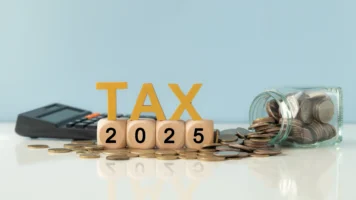When Can You Access Your Super?
Your superannuation is one of your most significant assets, designed to provide financial security during retirement. But when can you access your super? Knowing when and how you can access your super is crucial for planning your financial future. Whether you’re nearing retirement or facing financial challenges, understanding superannuation access rules can help you make informed decisions. In this guide, we’ll explain the key moments when you can access your super and if a secured personal loan is a better option.
Overview:
- What is superannuation and how does it work?
- When can you access your super?
- Can I access my super early?
- How to access your super early – 4 steps
- What are the cons of accessing your super early?
- Super FAQs
What is superannuation and how does it work?
Superannuation, also known as ‘super’, kicked off in Australia in 1992 with the introduction of the Superannuation Guarantee (SG). The super system is designed to help Aussies save for retirement, rather than relying solely on the age pension. Under this system, employers must contribute a percentage of an employee’s earnings into their chosen super fund. These funds are invested to grow over time, providing you with a monetary safety net for your retirement years.
Want to learn more about superannuation and how it works? Read our blog: What is Superannuation & How Does it Work in Australia?
When can you access your super?
Generally, you can access your super when you hit your preservation age and retire. The preservation age is the minimum age you must reach to access your superannuation in Australia, ranging from 55 to 60 depending on your birth year:
| Date of birth* | Preservation age |
| Before 1 July 1960 | 55 |
| 1 July 1960 – 30 June 1961 | 56 |
| 1 July 1961 – 30 June 1962 | 57 |
| 1 July 1962 – 30 June 1963 | 58 |
| 1 July 1963 – 30 June 1964 | 59 |
| From 1 July 1964 | 60 |
*This table is correct as of December 2024. Always check directly with ATO for current figures.
Once you reach your preservation age and stop working, you can dip into your super savings. If you keep working, you can still access part of your super through a Transition to Retirement (TTR) pension, letting you draw a portion of your funds while earning an income.
Once you turn 65, you can access your super freely—no retirement required.
Can I access my super early?
As super is designed to be a long-term investment to help fund your retirement, early access to your super can be heavily restricted. However, there are some special circumstances where you may be granted early access, such as:
- Severe financial hardship
- Compassionate grounds
- Terminal illness
- Permanent or temporary incapacity
- First Home Super Saver Scheme (FHSSS)
- When your super balance is less than $200
Each circumstance requires specific documentation and approval, often through your super fund or the Australian Taxation Office (ATO). Always consider the long-term impact on your retirement savings before withdrawing.
How to access your super early
If you need to access your super early, there are some basic steps you can follow:
1. Determine your eligibility
Early access to super is heavily restricted, so ensure you investigate whether or not you meet the eligibility requirements set by both the ATO and your super fund.
2. Gather your supporting documents
Depending on your reason for early access, you will likely need supporting documentation. Ensure you compile this before you submit your application to ensure your application is processed as quickly as possible and has a greater chance of being approved.
3. Apply through the ATO or your super fund
Depending on your reason, you may need to apply for early access through either the ATO or your super fund. For example, if you are applying under compassionate grounds or FHSSS, you will need to submit your application to the ATO via your MyGov account. For severe financial hardship or incapacity, apply directly through your super fund.
4. Await approval
Once approved, your super fund will process the withdrawal and transfer the funds to your account.
What are the cons of accessing your super early?
Accessing your super early might seem like a good idea when you’re in a tough spot, but it comes with some serious downsides:
1. Less money for retirement
Taking out your super now means you’ll have less saved for when you actually need it—retirement. That could leave you financially stretched later in life.
2. Missed growth opportunities
Super is designed to grow over time through compound interest. The earlier you dip into it, the less chance it has to build up into a healthy retirement fund.
3. Possible taxes
Depending on your situation, early withdrawals could be taxed, which means you won’t get the full amount. This means more money in the government’s pocket and less in your wallet.
4. Impact on insurance
Super accounts often include life and income protection insurance. If your balance drops too low, you could lose that coverage.
5. It’s not easy
Getting early access isn’t straightforward. You’ll need to meet strict rules and provide extensive paperwork, which can be a hassle.
6. Short-term fix, long-term problem
While it might help now, using your super early could leave you struggling financially down the track. Exploring other options might be a smarter move.
7. It can cost you money to put it back
If you decide you’re ready to top your super back up, then you may be paying more in tax. Self-contributions to superannuation in Australia can be taxed, depending on the type of contribution you make. This means your super can be taxed when you take it out and when you top it up, leading you to potentially pay a lot in tax.
Should I get a secured personal loan instead?
Generally, whether you should access your super early or get a personal loan depends on your individual circumstances and your financial goals for the future. A secured personal loan can be a better choice than accessing your super early because it preserves your retirement savings and keeps your financial future on track. Make sure you understand the rates and fees associated with a loan before deciding to take one out. You should always consider your circumstances carefully and seek advice from a financial expert if you’re unsure.
Going through a hard time and need funds urgently? Swoosh is here to help.
Life can hit hard sometimes and you may find yourself needing a little extra cash to see you through. At Swoosh, we offer fast, easy secured personal loans without any nasty hidden fees! Apply online today.
Super FAQs
How much super should I have at 55?
How much super you should have at 55 will depend on your gender, your retirement goals, lifestyle expectations, and when you plan to retire. Some experts suggest men should have around $316,457 in super at the age of 55, while women should have around $236,530.
At what age can I withdraw my super without paying tax?
Generally, you can make tax-free withdrawals from your super when you reach the age of 60. However, it’s important to check directly with the ATO to ensure this general rule applies to your individual circumstances.
Can I withdraw my super to buy a car?
Accessing super to buy a car is generally not allowed unless it’s tied to specific medical or compassionate needs. Instead, consider alternative financing options to keep your retirement savings intact such as a car loan.








